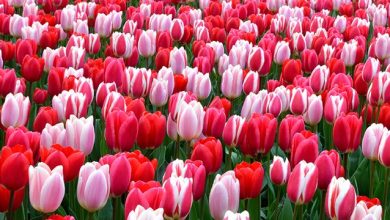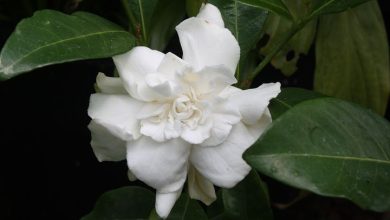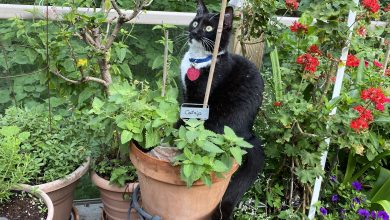Lotus Flower: [Complete Guide to Plant and Care]
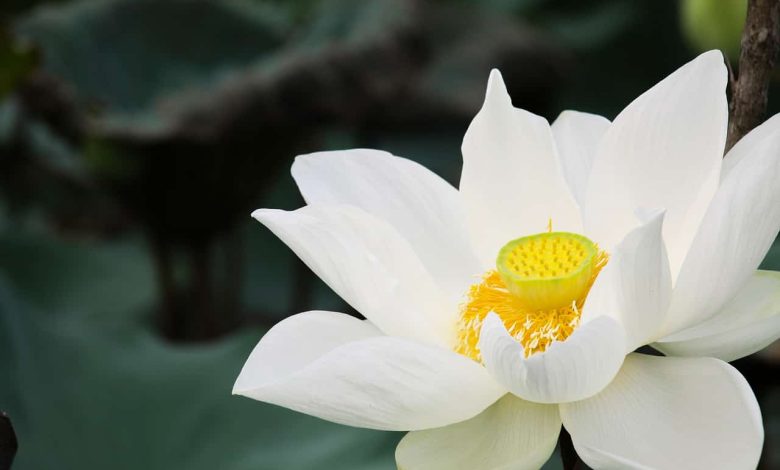
Nelumbo nucifera or lotus flower, also known as Indian lotus, sacred lotus, or simply lotus, is one of the two extant species of aquatic plants in the Nelumbonaceae family. It is sometimes colloquially called a water lily, although this more often refers to members of the Nymphaeaceae family.
The lotus flower is one of the most beautiful flowers that we can plant in our garden or pond. Their ornamental character makes them a very interesting option to embellish any place.
Lotus flowers are adapted to grow in slow-flowing rivers and delta areas. Lotus plants drop hundreds of thousands of seeds each year to the bottom of the pond.
Although some sprout immediately, and most are eaten by wildlife, the remaining seeds can remain dormant for a long period of time as the pond settles and dries.
In the event of a flood, the sediments containing these seeds break open, and the dormant seeds rehydrate and start a new colony of lotuses.
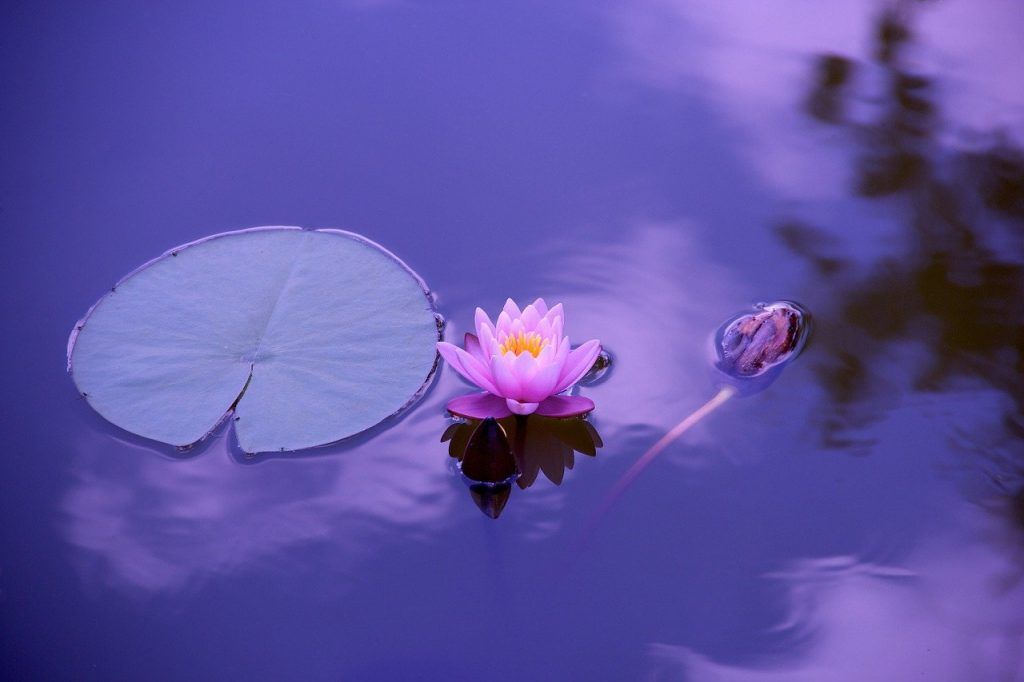
Characteristics of the Lotus Flower
- Common Name(s): Lotus Flower, Lotus, Sacred Lotus, Indian Lotus, Chinese Lotus Root.
- Scientific name: Nelumbo nucifera.
- Days to harvest: 5-8 months.
- Light: Full sun.
- Water: Lightly or moderately submerged.
- Soil: Loamy clay; fertile.
- Fertilizer: Balanced fertilizer for aquatic plants.
- Pests: Aphids, spider mites.
- Diseases: Fungal rot.
The lotus is a perennial flowering plant native to the Middle East, Asia, Australia, and New Guinea.
It is an aquatic plant that is found in nature in bodies of fresh water. The plant is also known by the names of sacred lotus, Indian lotus, Chinese water lily, and Egyptian bean.
The botanical name for the lotus is Nelumbo nucifera; the plant belongs to the family Nelumbonaceae. Nelubo is the only genus in the family Nelumbonaceae.
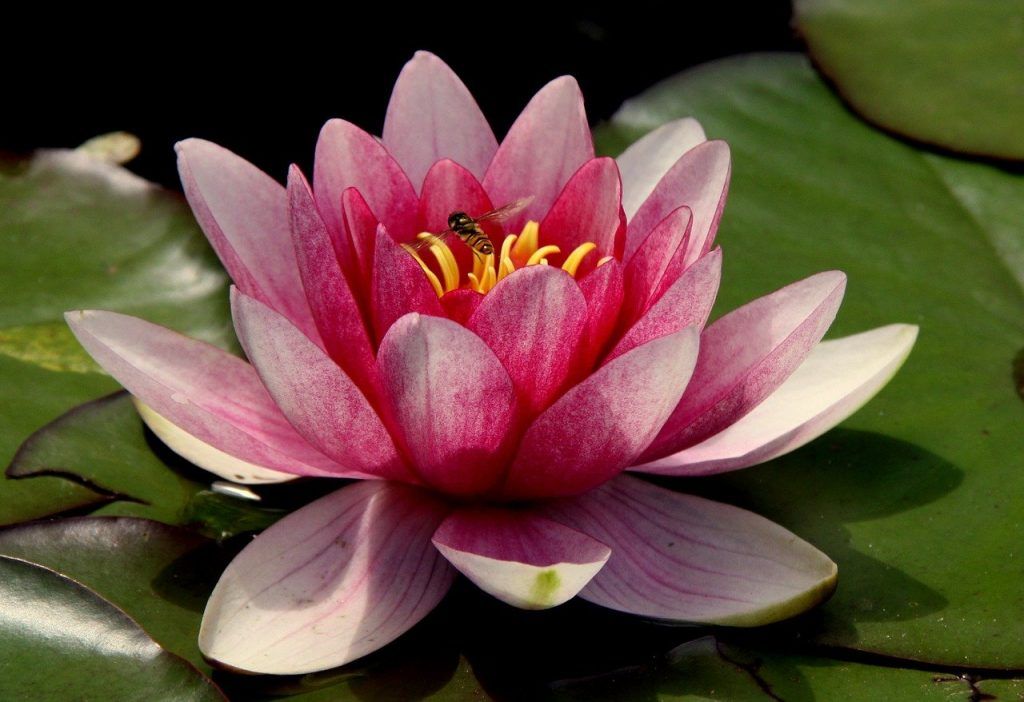
The seeds
The seeds of the lotus plant are dark brown and hard. The seed shapes are round and oval, but most are crescent-shaped and resemble small brown bananas.
Did you know…?Lotus seeds are «the oldest viable seeds on record,» germinating after 1,300 years.
The lotus is a perennial flowering plant native to the Middle East, Asia, Australia, and New Guinea.
The botanical name for the lotus is Nelumbo nucifera; the plant belongs to the family Nelumbonaceae.
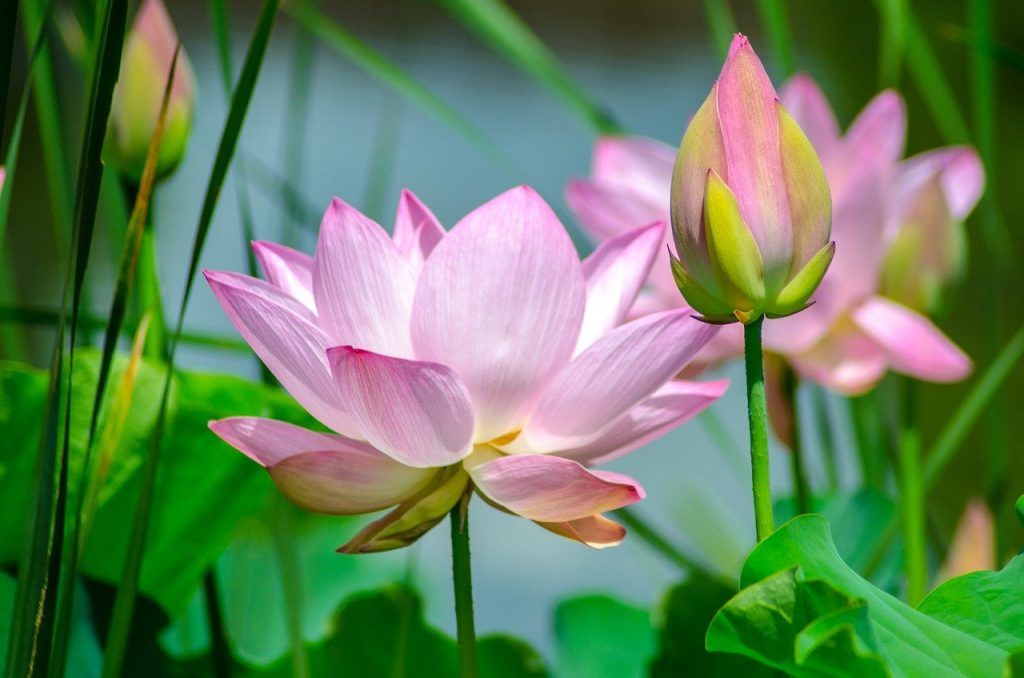
The leaves of the lotus flower
The leaves are round, with gathered edges. The leaves are attached by long stems and float on the surface of the water.
Lotus flowers are large, multi-layered flowers made up of many petals. Most specimens are pink, white or bicolor pink and white.
root system
The root system of the plant is a rhizome. A rhizome is a gnarled, woody growth that resembles the bulb of a garden lily.
The many stems of the lotus plant grow from the rhizome. The rhizome anchors itself in the muddy soil of ponds, ponds, and swamps.
The leaves are round, with gathered edges. The many stems of the lotus plant grow from the rhizome.
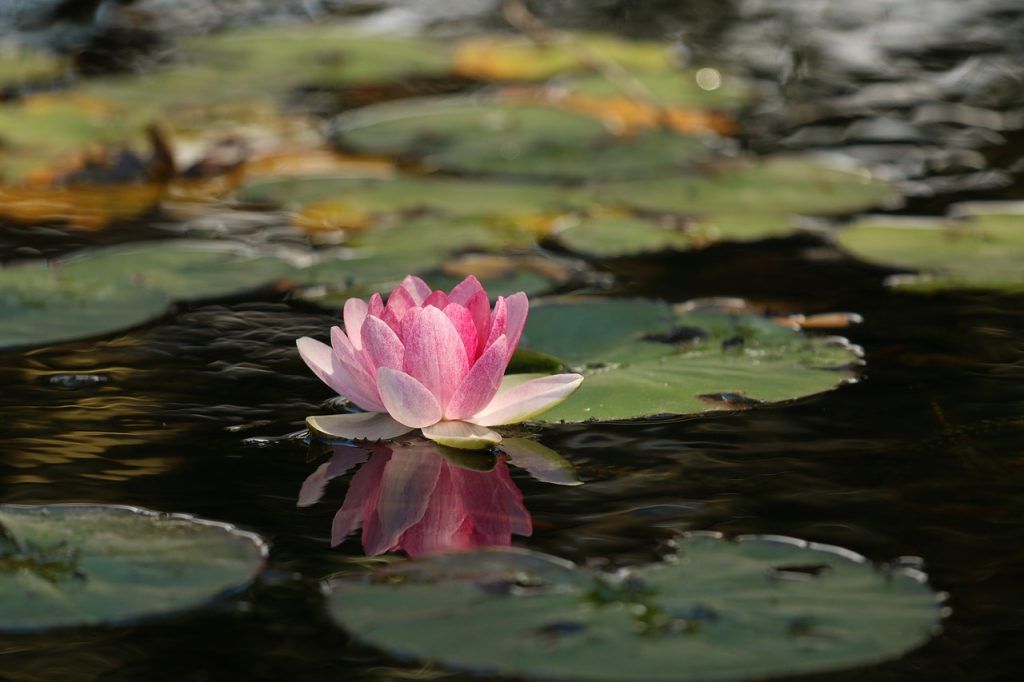
When to plant a Lotus Flower?
The typical growth period for lotus plants is from March to October.
Of course, this depends on where you live, as you have to be very careful with frost and extreme cold.
If you live in a warm zone, like zone 10 or 11, you can plant in mid-fall and harvest in spring.
You can also start growing lotuses in a pot before temperatures rise. Once they have weathered the cold, they can easily be moved outside.
Where can we grow the Lotus Flower?
If planted directly on the bottom of a pond, the lotus tubers can spread very wide.
They are difficult to control, especially since you have to drain the pond or swim to access them. Growing lotuses in a sunken pot in the pond ensures that they don’t get out of control. It will also be much easier to remove the plant from the pond for harvesting or overwintering.
For each lotus root, choose a large container at least 10 inches in diameter with no drainage holes. Save yourself the trouble and get a container with sturdy handles, as you’ll be moving it around quite a bit.
If you won’t be using the pond, use a large, airtight container. Many gardeners have used a barrel or even a garbage can. To grow lotuses indoors, choose a large container or decorative pot.
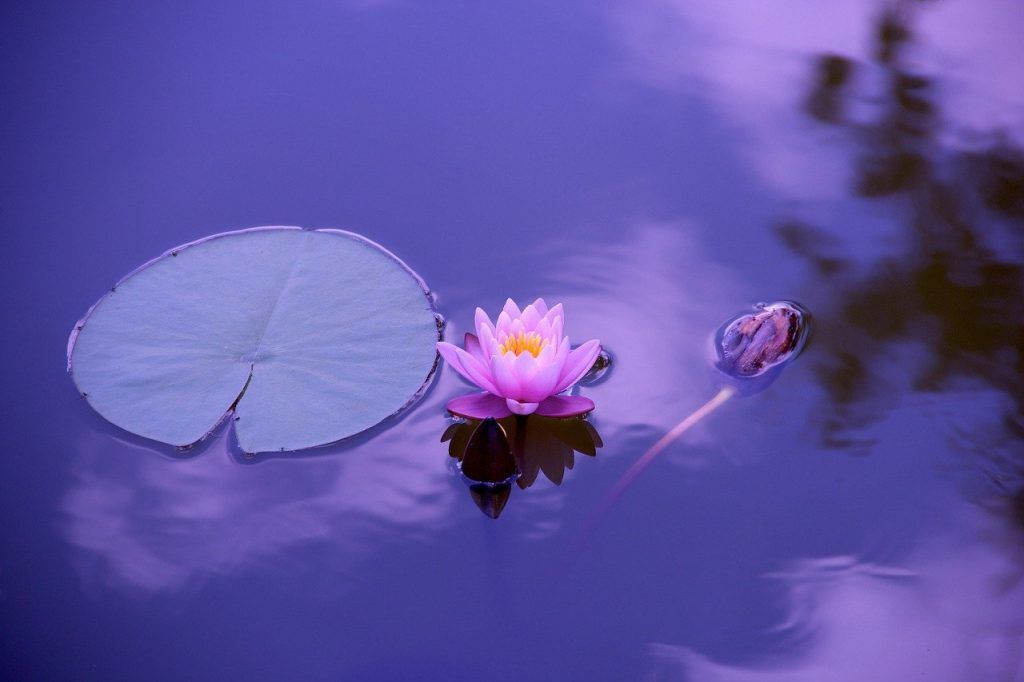
Preparing the land to sow the Lotus Flower
Lotus plants need at least 6 hours of sun a day to flower properly and thrive.
For the soil, you can buy soil made especially for pond plants, or use a heavy topsoil or clay.
Don’t use garden soil or anything that contains peat moss or too much organic matter, as some of this material will float in the water, and soil with too much organic matter will tend to cause newly planted seeds or tubers to rot.
However, you can use a small amount of homemade organic matter such as compost in your soil. Try mixing 80% clay or topsoil with 20% potting soil. Mix it well before adding water.
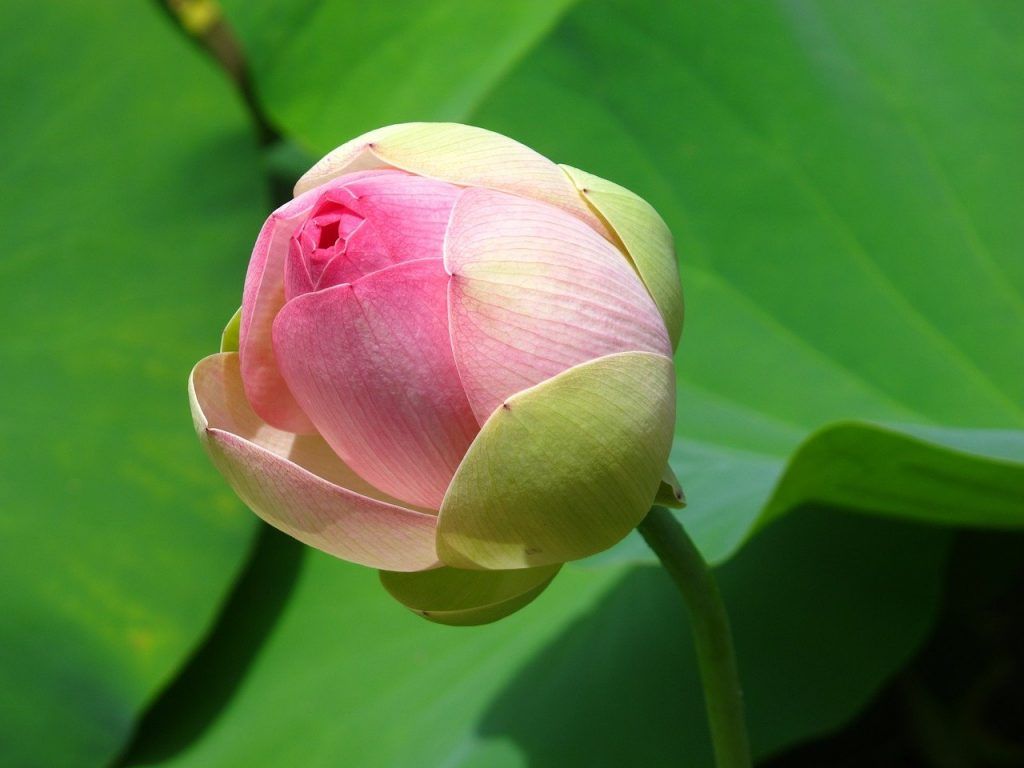
How to plant the Lotus Flower in your garden
- Use an airtight container without drainage holes. This will be your planting container.
- Fill the container with at least 10 centimeters of soil.
- Fill the container with enough water to wet the soil (no standing water).
- Place the tuber carefully on the surface of the moist soil.
- Now cover the tuber with a small amount of soil, about 10 centimeters, with the growing tips pointing up. The growing tips should be slightly above the ground and the rest of the tuber buried. (leave the growing tips slightly out of the ground).
- Cover the soil with a thin layer of sand or gravel. This holds the tuber in place and prevents the water from becoming cloudy when you place this growing container in a larger pond or container pond.
- Once you have the tuber planted in moist soil, top up with more water to cover the tuber above the tips. Growing tips should be covered with water at all times as water evaporates, replenish daily or every other day with more water.
- Put it in a sunny place. As we have mentioned, the lotus plant requires between 6 and 8 hours of sunlight.
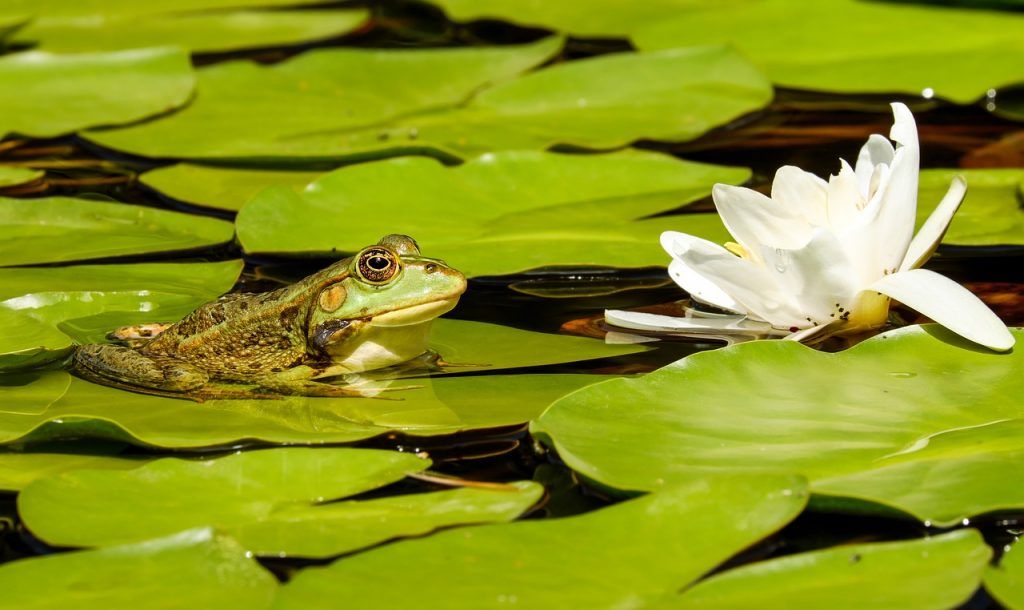
Care required by the Lotus Flower
Sun and temperature
Most of your lotus can be under water, but the large leaves need plenty of sun. Like any sun-loving plant, make sure your lotus plant gets 6-8 hours of full sun each day.
Once the temperature drops in autumn, the lotus roots will spend the winter in the mud as long as they don’t freeze.
In most areas, ponds don’t freeze, so the roots should be fine.
However, you may want to move the container to a deeper part of the pond for the winter, just in case. You can also take the container to your shed or garage and change the water as needed.
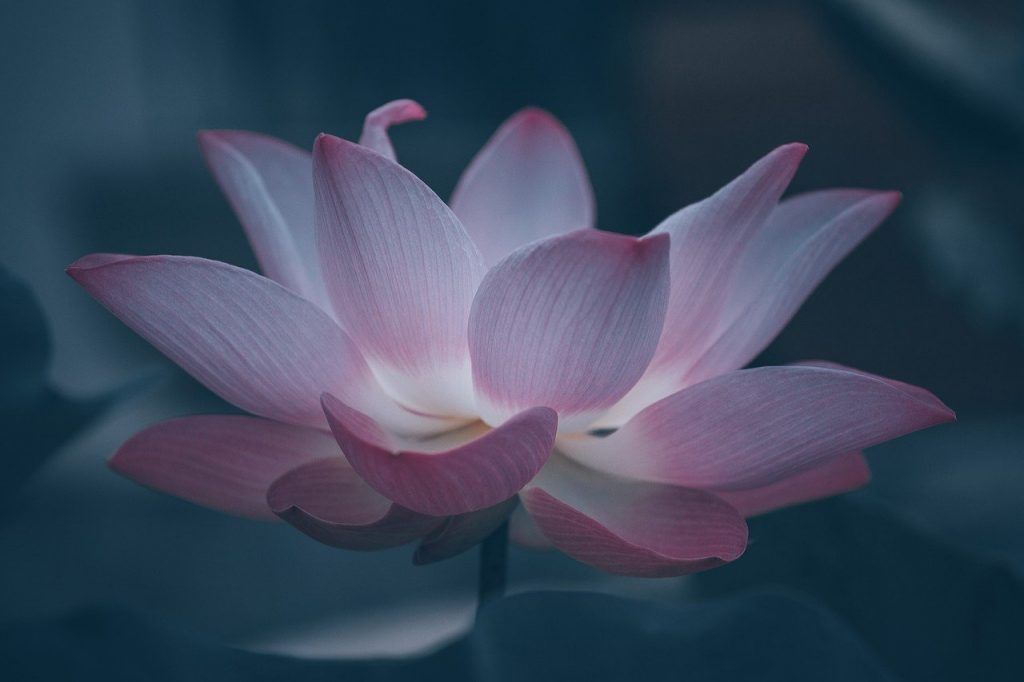
water and irrigation
Did you know…?We have great news: You will never forget to water this plant!
Since the Chinese lotus root is completely submerged, your only responsibility is to control the level and quality of the water.
In aquatic facilities, use a pump or agitator to keep the water cool, aerated, and moving.
This keeps the pH balanced and keeps surface pests, like mosquitoes, away. The lotus usually grows well with water dwellers, although koi have been known to nibble on it.
If you grow the lotus in a container, top up the water level when necessary. You should also make sure to change the water every year.
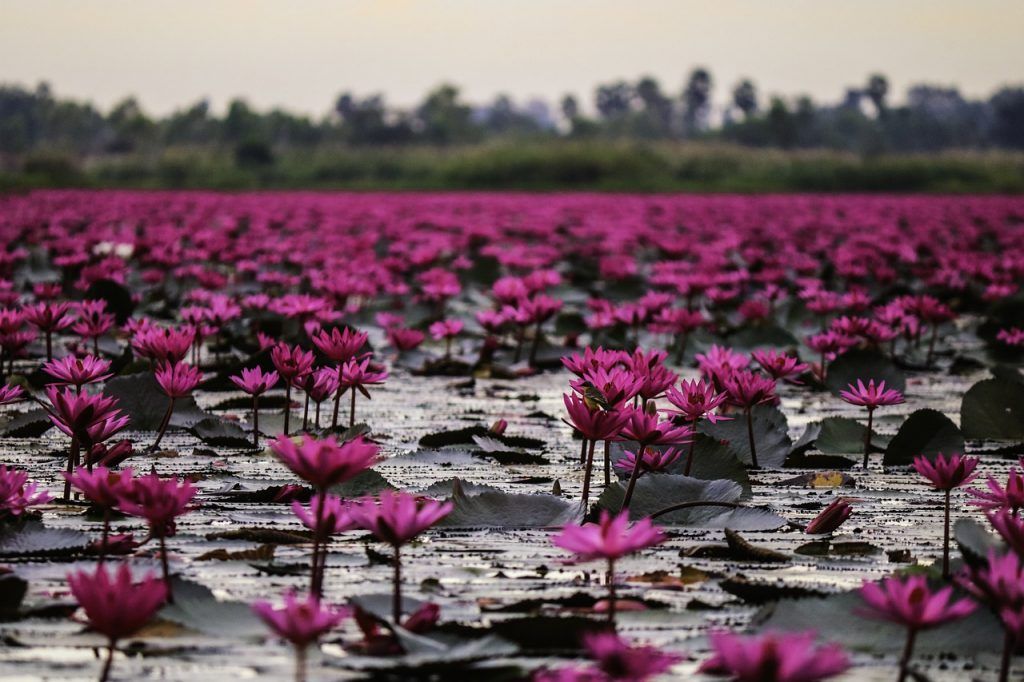
ground and earth
We may grow these tubers in the mud, but this does not mean that we can ignore the quality of the soil. The lotus tuber needs a rich soil with lots of organic matter. However, normal potting soil is not enough.
Potting soil is usually very light and clayey, causing it to float up or cloud when submerged under water. Other growing media such as peat moss, coco, perlite, and vermiculite also float.
To keep everything in place, we need a heavy soil with a loamy clay texture.
You can purchase pond plant soil intended for water lilies. You can also make your own by mixing four parts clay or loam soil with one part aged and composted cow manure.
When mixed with water, the soil should turn into a thick mud.
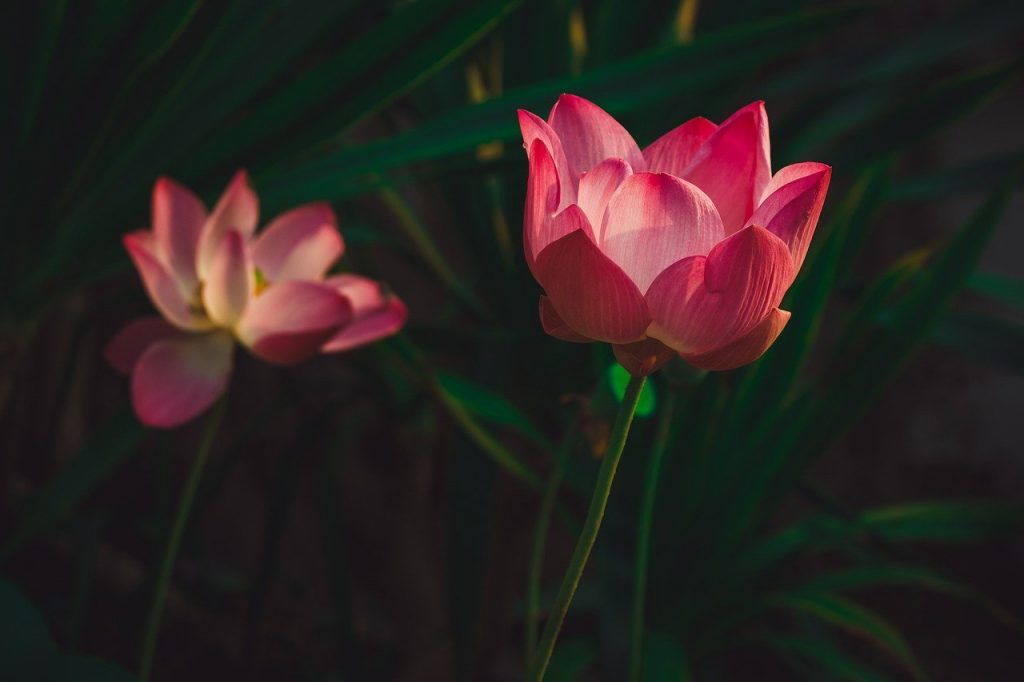
How to pay
When the first aerial leaf rises above the water, it is time to start fertilizing. For best results, apply fresh nutrients every month through winter. Use a balanced fertilizer designed for aquatic plants.
The easiest way to apply fertilizer underwater is to use fertilizer tablets. Simply press them into the mud and they will quickly release their nutrients.
Use good judgment when choosing a subscription. Ideally, it should be organic and safe for aquatic life. Some fertilizers may contain chemicals that promote algae growth, so do your research before you buy.
Unless lotus root is used in a solid aquaponics system, don’t rely on fish to provide it with nutrients. If you want the young lotus to grow well, it needs compost.
Pruning
Pruning will keep your Chinese lotus root looking like new.
Throughout the growing season, trim yellow leaves and faded flowers. Dead stems absorb oxygen, always cut them above the water level.
If you have to move the pot to another part of the pond for the winter, move it before you prune away any dead leaves. Be sure to throw away or compost the scraps instead of leaving them in the pond or water garden.
If you grow lotus root as a perennial plant, repot every 3-4 years with fresh soil. If the lotus root has filled the entire container, you will need to divide it to propagate it in a larger pot.

Spread
As you can guess from our planting method, lotus root is mainly propagated by dividing the rhizomes. From the roots continuously grow links of tubers that can be divided into several plants.
Since they grow so fast, you can take cuttings for your friends and still have enough to fill your water garden.
Early in the growing season, when new shoots appear on the tuber, cut the links. For a new plant to grow, each section must have at least one intact growing tip. Be careful not to break them.
This plant can be grown from lotus seeds, but it is an unreliable method. A lotus seed can be viable for thousands of years thanks to its long dormancy period. Unfortunately, this means that the seeds can be very difficult to germinate, as they may not be ready.
Unless you have a lot of patience and time each year, it’s best to ditch the seed and plant the root.
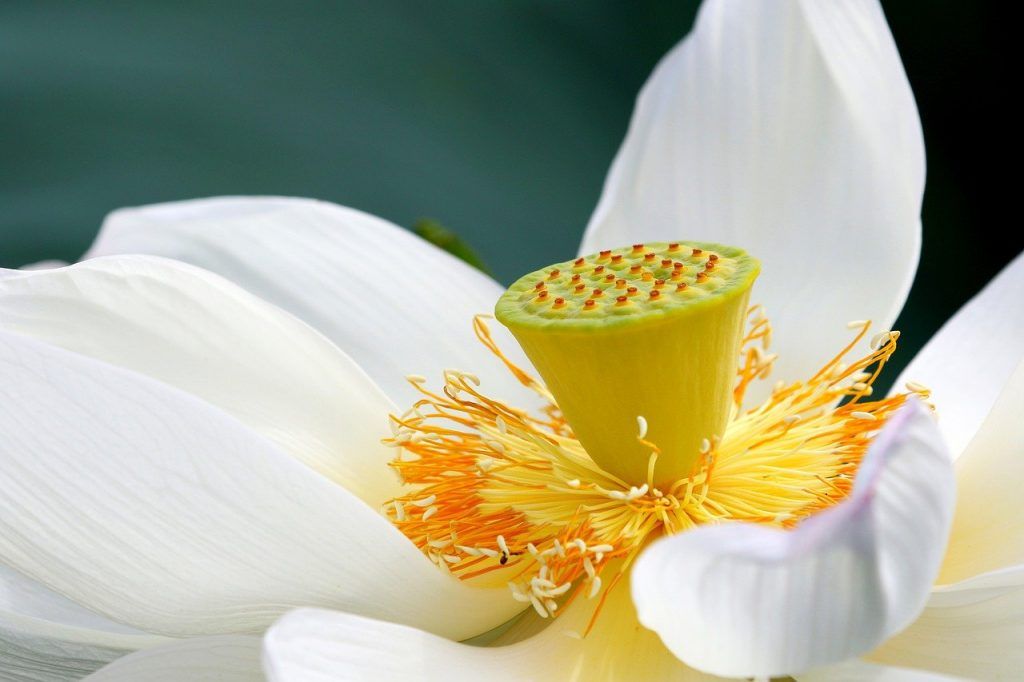
Lotus Plant Pests
Unless there’s something really wrong with your water, you probably won’t have many pest problems. Any problems you find will likely be minor pests on the leaves and flowers.
aphids
Aphids seem to be a problem anywhere, even near water.
Although they do not usually cause fatal damage, these pests can transmit diseases to the plant. Large groups of aphids will suck the life out of a plant, causing it to turn yellow and wilt.
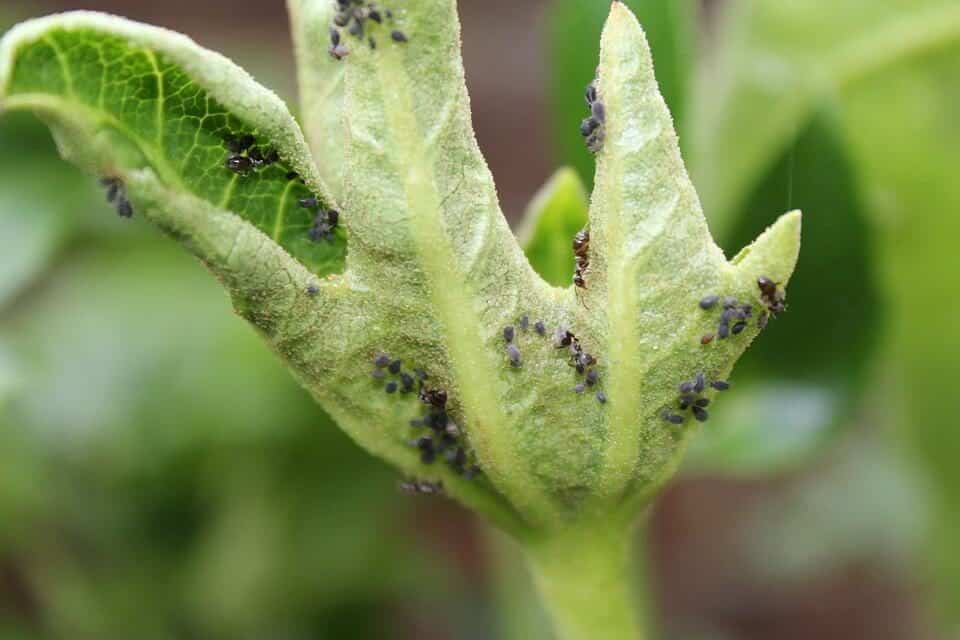
Mites and spider mites
Spider mites can also attack your lotus plants.
These pests weave ultrafine webs on the upper part of the plant and cause yellow spots on the leaves. They can be more difficult to get rid of, so you’ll want to be safe than sorry.
The best pest control that we can take advantage of are beneficial predators, such as ladybugs or some types of larger spiders.
Both fish and frogs feed on insects, including these pesky aphids and spider mites. You can shake the plant or spray it with the hose so that some of the pests fall into the water.
If you don’t have any wildlife on your side, insecticidal soap or neem oil can also help with these pests. However, as we are working in water gardens, make sure any pesticides are safe for the water supply.
- Here if you want to delve into the use of potassium soap.
- And here if you want to see the best options and how we can use neem extract.
mosquitoes
Finally, there is one pest that most people who have a water garden fear: mosquitoes.
They breed in slow moving or stagnant water and lay their eggs on the surface of the water.
Consider applying a «mosquito dunk» or other BTi additive to reduce the mosquito population. Although these pests do not feed on your plant, they do feed on you.
It is also advisable to plant anti-mosquito plants near the pond and obviously, if you install a filter and keep the water moving, the mosquitoes will find it much more difficult to breed.
To learn more about anti-mosquito plants, check out this article.
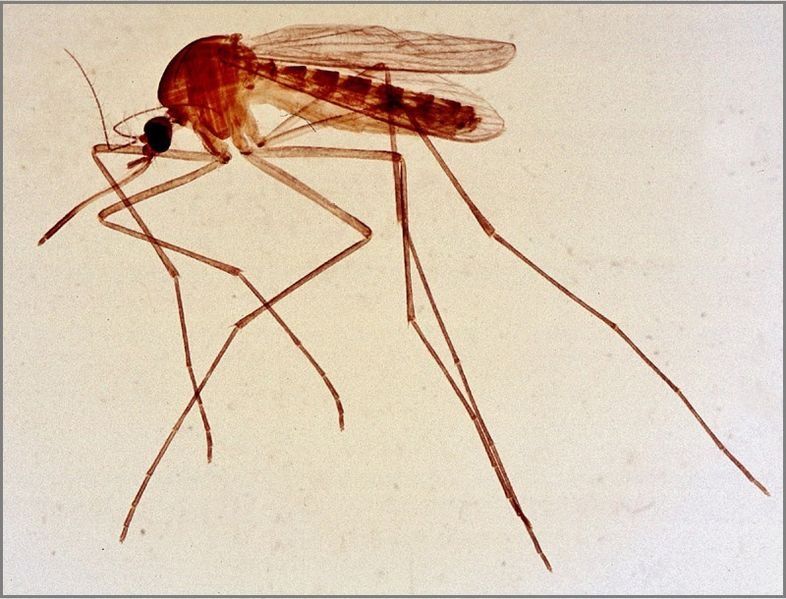
Diseases that can attack the lotus
Being in such a humid environment, the lotus plant can rot. Some lotus varieties have been bred to resist rot, but it can still occur.
Although lotus rots are not common, they seem to be becoming more prevalent as time goes by.
fusarium mushroom
Recent studies have found that many of these rots may be related to Fusarium fungi, specifically Fusarium incarnatum and Fusarium tricinctum.
They can be found as pathogenic fungi in maize, rice or sorghum.
People who are in an area where any of these crops are grown commercially should be on the lookout for symptoms of what is called lotus root disease caused by these pathogens.
If your lotus leaves begin to develop visible brown edges and wilt, you are likely suffering from Fusarium incarnatum.
Fusarium tricinctum tends to be darker and more damaging to the root itself.
Currently, there are no prescribed solutions for the treatment of these two strains of fusarium, but a treatment applied to relieve other, more common symptoms of fusarium wilt may be beneficial.
It is also recommended to trim the damaged parts of the plant and dispose of them (without composting them). Or also use a homemade fungicide (without added chemicals or pesticides that can damage the aquatic ecosystem).
My Lotus plant is not growing, what could be happening?
Lotus plants are prone to chlorosis, which is when the leaves turn yellow. If you want to know more about chlorosis you can see this article.
The cause is usually excess or lack of fertilization.
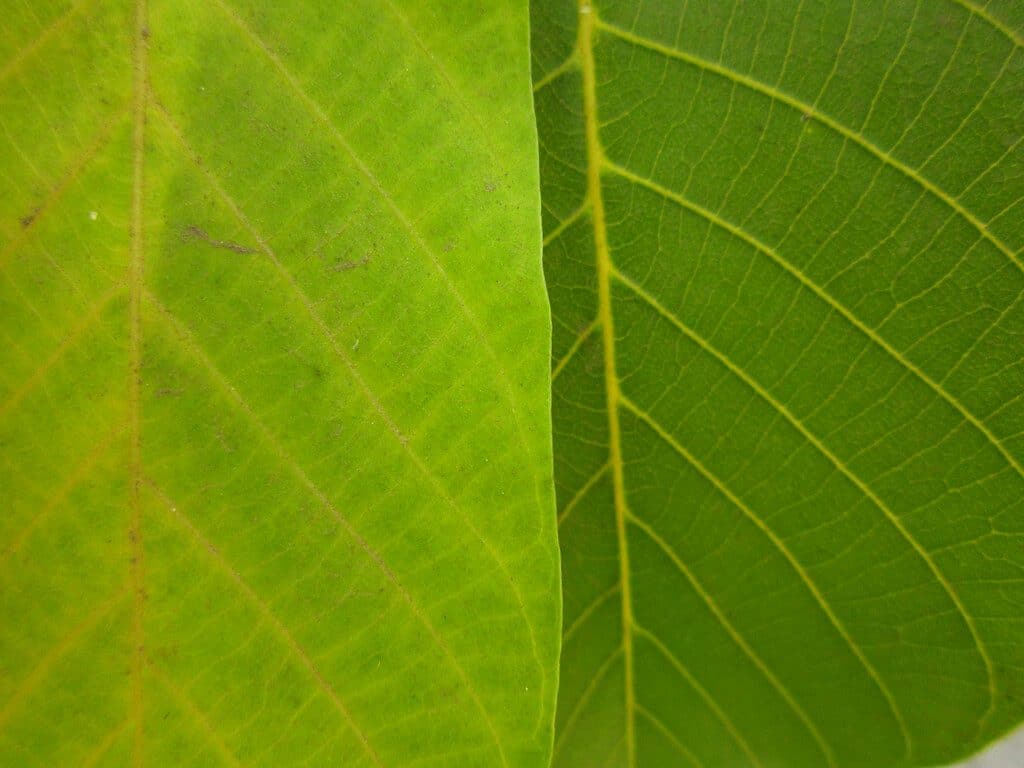
The pH imbalance of the water can also be the culprit, so be sure to change the water every year for a pot of stagnant water. Use an agitator in ponds to keep the water livable.
Leaves affected by chlorosis may not recover, but you can prevent the rest from turning yellow as well.
Lily pads are usually good to pond animals, but koi have been known to nibble on plants and disturb the soil. If the koi are giving you trouble, try moving the plants to the water’s edge and blocking them with rocks to separate them from the fish.
It also helps to fill the pond with lots of plants so that fish don’t repeatedly fixate on just one.
Meaning of the Lotus Flower
- The different colors of the Lotus Flower also have different meanings.
- The Red Lotus Flower symbolizes passion.
- The White Lotus Flower symbolizes purity.
- The yellowish (or golden) Lotus Flower symbolizes the Buddha himself.
- The Pink Lotus Flower represents the previous history of the Buddha, as well as divinity. The Blue Lotus Flower represents logic and wisdom.
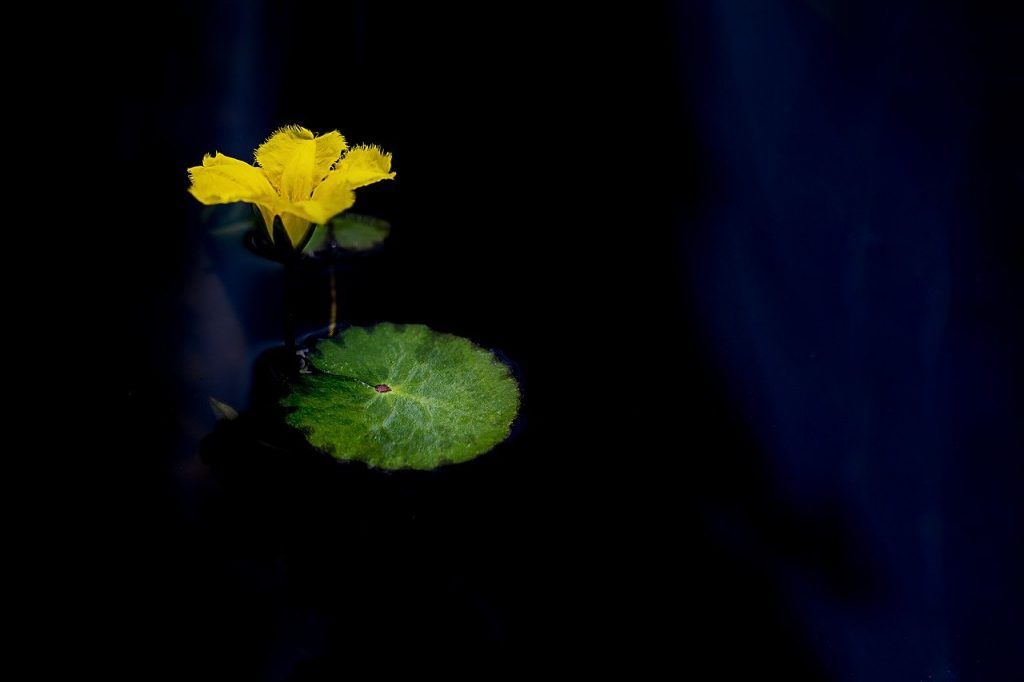
Curiosities about the Lotus Flower
- The Lotus Flower may not thrive in a water source that is not properly filtered, mud-free, and clean. You need the mud so that the roots are properly secured and buried.
- Plants are available in various colors including yellow, pink, red, blue, purple, and white.
- The plant is not only admired for its beauty but also for its attractive aroma.
- The leaves of the Lotus Flower contain air that helps them float on the surface of the water. But, full buoyancy is not guaranteed, and the leaves sometimes stay under water.
- A Lotus is said to be a 1,300-year-old seed that is still capable of germinating after being dormant all this time. Therefore, we believe that the seeds are viable for enormous periods of time.
- Traditional Asian cuisine often uses the seeds, small leaves, flowers (with petals), and roots of the lotus plant as ingredients for their meals. The larger lotus leaves are normally used to wrap food.
- The seeds are produced and found in circular pools that are located in the center of the Lotus Flower. These pods have been used as a fragrant decoration that is flowery once it has dried.
- The petals of the Lotus Flower have also been used as a design.
- In yoga there is a famous posture called “Lotus flower” or “lotus”.
Bibliography and references
-
Aquatic plants in design, R López de Juambelz, A Aguilar Contreras – Bitácora Arquitectura – revista.unam.mx
-
Growth characteristics of Nelumbo nucifera Gaertn. in response to water depth and flooding, S Nohara, M Kimura – Ecological Research, 1997 – Wiley Online Library
-
[HTML] Phytochemical profile and biological activity of Nelumbo nucifera, KR Paudel, N Panth – Evidence-Based Complementary and Alternative …, 2015 – hindawi.com
-
Constituents of Nelumbo nucifera leaves and their antimalarial and antifungal activity, VK Agnihotri, HN ElSohly, SI Khan, MR Jacob… – Phytochemistry…, 2008 – Elsevier
-
PDF] Invasive exotic and translocated aquatic plants , JR Bonilla-Barbosa, B Santamaría – R. Mendoza and P. Koleff (coords.) …, 2013 – academia.edu

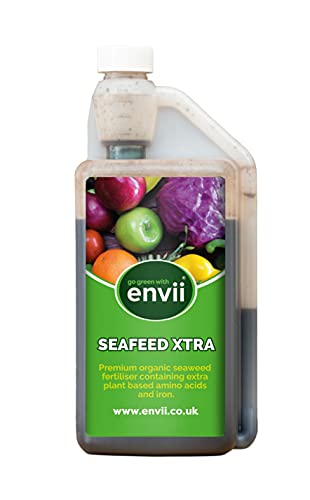
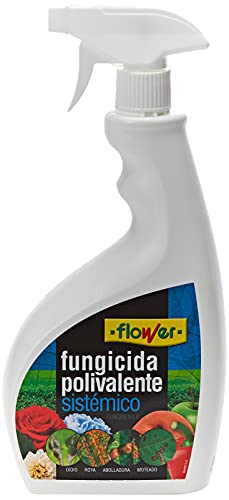
![Photo of Zahareña: [Cultivation, Care, Pests and Diseases]](https://www.complete-gardening.com/wp-content/uploads/2021/06/Zaharena-390x220.jpg)
